Maritime scenes photography offers a unique opportunity to capture the beauty and grandeur of the open sea, with its ever-changing landscapes, dynamic movements, and breathtaking vistas. Whether you’re a seasoned photographer or just beginning, mastering the art of maritime scene photography requires a combination of technical expertise, creativity, and a deep understanding of the elements that make these scenes truly stand out. In this comprehensive guide, we’ll explore the essential tips, techniques, and strategies needed to create stunning maritime photographs that resonate with viewers and leave a lasting impression. From understanding the best times to shoot and how to work with light and composition, to selecting the right gear and post-processing your images, we’ll cover everything you need to know to elevate your maritime photography game. Let’s dive in and uncover the secrets to capturing the most dramatic and stunning maritime scenes possible!
Key Takeaways
– Capture dramatic maritime scenes with optimal lighting: Shoot during the golden hour for soft, diffused light that enhances textures and creates vibrant colors.
– Master composition for balance and depth: Use the rule of thirds, leading lines, and symmetry to frame your scenes effectively.
– Equip yourself for success: Invest in a high-quality camera, fast lens, tripod, and polarizing filter to handle diverse conditions and enhance your shots.
– Time your shots wisely: Plan around golden hours, calm conditions for reflections, and unique moments like sunsets or rainbows.
– Enhance your photos post-processing: Adjust colors, contrast, and sharpness to bring out details and refine your images.
– Explore unique perspectives: Try low-angle shots, reflections, and aerial views to add depth and drama to your photos.
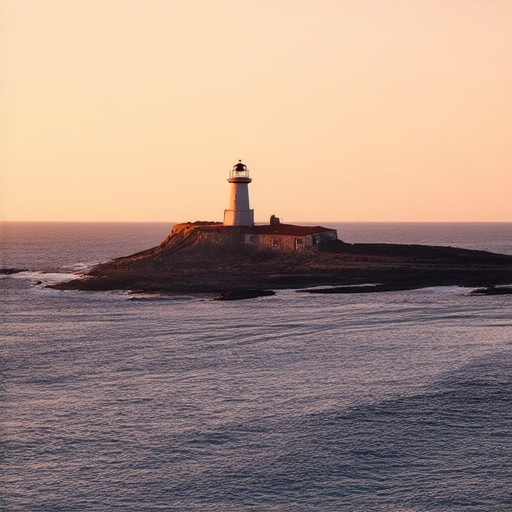
Stunning Maritime Scenes: Expert Photography Tips
Capturing breathtaking maritime scenes requires a combination of technical skill, creativity, and attention to detail. Here are some expert tips to help you get started:
- Choose the Right Time of Day : The golden hour, typically 30 minutes before sunrise or sunset, often provides ideal lighting conditions for maritime photography. Soft, diffused light during these times enhances textures and creates dramatic skies.
- Focus on Composition : Use leading lines, such as the horizon or rigging, to draw the eye toward the subject. Symmetry and balance are key elements in creating visually appealing shots, especially with reflections on water surfaces.
- Pick the Right Equipment : A sturdy tripod is essential for stability, especially on moving vessels. Consider using a wide-angle lens to capture the vastness of the sea and a telephoto lens for detailed shots of ships or distant landscapes.
- Understand Light and Shadows : Pay attention to how light interacts with the ship and its surroundings. Backlighting can create dramatic silhouettes, while frontlighting enhances details on the boat and the sea.
- Scout Your Location : Research the area beforehand to find unique vantage points. Look for opportunities where the ship or landscape intersects with the sky, creating dynamic compositions.
- Consider Weather Conditions : Stormy weather can add drama to your photos, but always check the forecast and prepare accordingly. Strong winds may require adjustments to your camera settings to avoid blur.
- Edit Your Photos Thoughtfully : Post-processing can enhance your photos by adjusting colors, contrast, and exposure. Experiment with black-and-white conversions to emphasize textures and shapes in maritime scenes.
By applying these tips, you can transform ordinary maritime views into extraordinary works of art. Remember to explore different angles and perspectives to uncover the hidden beauty of the sea.
Best Techniques for Capturing Stunning Maritime Scenes in Photography
Maritime photography offers a unique opportunity to capture the beauty and power of the ocean. Here are some expert tips to help you get started:
1. Lighting
The right lighting can transform a simple scene into something extraordinary. Shoot during the golden hours—sunrise or sunset—for soft, warm lighting that enhances the colors and textures of the sea and sky. This time also provides long shadows that can add depth to your photos.
2. Composition
Composition is key to creating a memorable maritime scene. Use leading lines, such as the horizon or the mast of a ship, to guide the viewer’s eye through the frame. Consider symmetry by aligning your subject with the boat or waves for balance. Include elements like the sky, water, boat, and distant islands to add depth and interest.
3. Timing
Know the right time to shoot. Capture the scene during calm waters for mirrored reflections, or during rough seas to add dynamic movement. Pay attention to the tide and weather conditions, as they can drastically change the appearance of the scene.
4. Aperture and ISO Settings
Experiment with your aperture and ISO settings to control depth of field and handle low-light situations. A smaller aperture can blur the background, focusing attention on your foreground subjects. Increase your ISO to reduce noise and allow for faster shutter speeds in dimmer conditions.
5. Color Correction
Post-process your photos to enhance color and detail. Adjust the white balance to ensure colors appear naturally. Use editing tools to boost vibrancy and sharpness, making your photos more lifelike and vivid.
6. Camera and Lens Selection
Choose the right equipment for the job. A wide-angle lens is ideal for capturing the vastness of the sea, while a telephoto lens can compress the scene and emphasize key elements. Consider using a tripod for stability, especially when photographing from a moving vessel.
7. Incorporate Life and Reflection
Add life to your photos by including people or boats in the frame. Look for reflections on the water surface, which can mirror the boat or sky, adding layers to your image. Experiment with angles, such as shooting from below the deck or a unique vantage point, to explore fresh perspectives.
8. Patterns and Movement
Pay attention to patterns in the waves or clouds. These can add visual interest and dynamism to your photos. Capture the motion of a sailboat or the spray from a wave to bring your scene to life.
By combining these techniques, you can create stunning maritime photographs that truly capture the essence of the sea. Remember to experiment, learn from your mistakes, and enjoy the process of capturing the world around you.
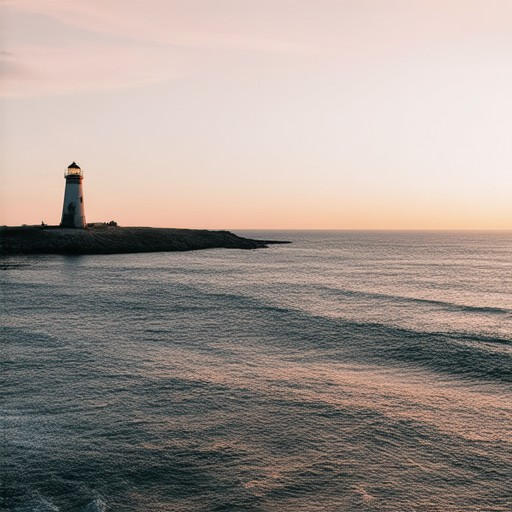
How to Capture Stunning Maritime Scenes in Photography
Capturing stunning maritime scenes requires a blend of technical expertise, creativity, and an eye for detail. Whether you’re photographing serene coastal landscapes, dramatic sunsets over the horizon, or vibrant boat races, the key lies in understanding light, composition, and the unique characteristics of maritime environments. Here’s a guide to help you excel:
- Plan Thoroughly
- Research your location: Study the area’s geography, weather patterns, and seasonal changes to find the best times and angles for shooting.
- Choose the right equipment: Use a sturdy tripod, wide-angle lens, and fast aperture for low-light conditions.
- Time your shots: Capture golden hours (dawn and dusk) for soft, warm lighting that enhances marine colors.
- Master Light and Shadows
- Understand how light interacts with water: Soft, diffused light during sunrise/sunset creates magical maritime scenes.
- Avoid harsh shadows: Use fill light (reflective surfaces like clouds or white objects) to balance contrasts.
- Experiment with silhouettes: Backlight boats or sails against the sky for dramatic outlines.
- Compose Effectively
- Use leading lines: Horizontal lines like waves or masts can draw the viewer’s eye into the frame.
- Incorporate foreground elements: Rocks, lighthouse beams, or boats add depth and interest.
- Frame the scene: Look for natural frames like mist, trees, or distant islands to isolate your subject.
- Preserve Color and Contrast
- Take advantage of color contrasts: Blue hues dominate maritime scenes, but complementary colors like orange/red enhance vibrancy.
- Adjust white balance: Ensure colors remain accurate and vivid, especially under varying light conditions.
- Balance exposure: Avoid overexposing the sky or underexposing the sea to maintain detail in shadows and highlights.
- Post-Processing Magic
- Adjust tonality: Use editing software to fine-tune colors and contrast for a polished look.
- Sharpen details: Enhance textures in the foreground and background without over-sharpening the entire image.
- Remove distractions: Clone or erase unwanted elements like people, debris, or reflections.
By combining these techniques, you’ll be able to capture the essence of maritime photography and create timeless images that inspire sailors and photography enthusiasts alike. Explore more tips and inspiration on Sailing Photo Awards , where maritime photography reaches its full potential.

Capturing Stunning Maritime Scenes in Photography
Crafting breathtaking maritime photographs requires a blend of technical expertise, artistic vision, and attention to detail. Here are the essential elements to consider:
- Lighting : The right lighting is crucial for marine photography. Golden hours, typically 30 minutes before sunrise or sunset, often yield dramatic and vibrant shots. Look for soft diffused light during midday, which can emphasize textures and colors.
- Composition : A strong composition balances elements like horizon, boat, waves, and sky. Use leading lines (like masts or rigging) to draw the eye toward the horizon, and experiment with framing techniques to highlight your subject.
- Equipment : Equipment choice is vital. A high-quality camera with a fast lens is recommended for capturing fast-moving subjects like ships or waves. Consider polarizing filters to reduce glare and enhance color vibrancy.
- Focus and Depth of Field : Sharpness is key. Use manual focusing to ensure critical focus, especially on details like the boat’s rigging or distant lighthouses. Experiment with shallow depth of field for a ethereal effect.
- Timing : Photograph during calm conditions for mirror-like reflections, or during rough seas for dynamic compositions. Capture the magic of sunsets or rainbows to add visual interest.
- Post-Processing : Enhance your photos with careful editing. Adjust exposure, contrast, and color balance to bring out details. Remove unwanted distractions and fine-tune the horizon for a polished look.
For more inspiration and tips, explore the Sailing Photo Awards gallery and educational resources. Share your favorite maritime shots and learn from the community of passionate photographers.
Best Methods to Capture Dramatic Maritime Scenes in Photography
Capturing dramatic maritime scenes requires a combination of technical skills, creativity, and an eye for detail. Here are some proven techniques to help you achieve stunning results:
- Choose the Right Time of Day
- Utilize Natural Light and Shadows
- Experiment with Angles and Perspectives
- Consider the Background
- Use a Tripod for Stability
- Think About the Story Behind the Scene
The golden hour, typically one hour after sunrise or before sunset, offers soft, diffused light that enhances textures and creates dramatic atmospheres. This is ideal for capturing the warm tones of sunsets or the cool, moody tones of dawn.
Natural light can create dynamic shadows that add depth to your photos. Position yourself so that the sunlight highlights features of the ship or the surroundings, creating dramatic contrasts and adding dimension to your scene.
Don’t always shoot straight on. Try shooting from unique angles, such as a low angle to emphasize the scale of the ship or a high angle to capture the vastness of the ocean. Experiment with perspectives that highlight the subject’s movement or the surrounding environment.
The background plays a crucial role in the drama of a maritime scene. Use the horizon to add depth and perspective. If the background is too busy, simplify it by focusing on the foreground elements or using a long exposure to blur the waves and create a sense of motion.
A tripod ensures stability, especially in rough conditions. This allows you to adjust settings quickly and maintain sharpness, even in challenging lighting or movement scenarios.
Maritime scenes often tell stories. Imagine the history of the ship, the journey it has undertaken, or the emotions of those who have sailed on it. This storytelling approach can help you connect with your audience on a deeper level and convey the essence of the moment.
To further enhance your maritime photography, visit our Sailing Photo Awards website for exclusive tips, galleries, and resources dedicated to capturing the beauty of the sea.

Best Practices for Capturing Stunning Maritime Scenes in Photography
Capturing breathtaking maritime scenes requires a combination of technical skill, artistic vision, and attention to detail. Whether you’re photographing a serene coastal landscape, a dramatic sunset over the ocean, or an action-packed moment on the water, these tips will help you create stunning maritime photos that stand out.
1. Lighting is Key
Lighting plays a crucial role in transforming an ordinary scene into something extraordinary. Here’s how to make the most of it:
- Golden Hour: The best times to shoot are during sunrise or sunset, as the light is soft and creates long shadows that enhance textures in the scene. These times also offer dramatic color contrasts.
- Clouds: Use clouds to add mood and scale to your photos. Cloud formations can help frame the scene or add a sense of movement, especially during storms or changing weather conditions.
- Shadows: Pay attention to how shadows fall on the water and the boat. Use them to create depth and dimension in your photo.
2. Composition Matters
A well-composed photo can make all the difference between a good shot and a great one. Consider these composition techniques:
- Rule of Thirds: Use this guideline to frame your scene. Place the horizon or boat in the third of the frame for a balanced look.
- Leading Lines: Look for lines in the scene, such as masts, rigging, or waves, and use them to lead the viewer’s eye toward the center of the photo.
- Symmetry and Balance: Capture scenes that are symmetric or balanced, such as a perfectly aligned boat or reflections on the water.
- Foreground Interest: Include elements in the foreground to add depth and interest to the photo, like a distant lighthouse or a bird flying overhead.
3. Choose the Right Equipment
Having the right gear can significantly improve your photography. Consider the following:
- Camera Settings: Use manual focusing to ensure sharpness, especially when the subject is far away. Experiment with aperture settings to control depth of field and blur backgrounds effectively.
- Lens Selection: A wide-angle lens is ideal for capturing the vastness of the ocean. Telephoto lenses are useful for zooming in on distant subjects or boats.
- Tripod: Always use a tripod to keep your camera stable, especially in rough conditions or when low-light shooting is required.
- Polarizing Filter: Use a polarizing filter to reduce glare and enhance colors, particularly during the golden hour or when the sun is reflecting off the water.
4. Timing and Patience
Maritime photography often requires patience and timing:
- Tide and Weather: Plan your shoots around high tide for dramatic wave patterns, but be prepared for quick changes in weather conditions.
- Seasonal Changes: Different seasons bring unique lighting and color palettes. For example, autumn foliage can add vibrant colors to coastal scenes.
- Wait for the Moment: Sometimes the best shots happen at unexpected times. Keep an eye on the sky, waves, and boat movements, and be ready to capture the perfect moment.
5. Post-Processing Techniques
Even great shots can be improved with post-processing:
- Color Correction: Adjust the colors to enhance the mood of the scene. Desaturate overcast skies to make them more dramatic or boost the saturation of vibrant hues.
- Contrast Adjustment: Increase contrast for sharper details, especially in shadowy areas. Use curves or other tools to fine-tune the tones.
- Sharpening: Apply selective sharpening to bring out details in the boat, water, and distant objects without over-sharpening the entire image.
6. Explore Unique Perspectives
Don’t limit yourself to traditional shots. Consider these creative approaches:
- Aerial Shots: If possible, take advantage of drones or aerial photography to capture unique perspectives from the sky.
- Low-Angle Shots: Get down low to emphasize the scale of the ocean and the boat.
- Reflections: Capture reflections of the boat or surrounding scenery on the water surface for added depth and drama.
Conclusion
Capturing stunning maritime scenes is a rewarding challenge that combines technical skills with artistic vision. By paying attention to lighting, composition, equipment, and timing, you can create photos that truly showcase the beauty of the sea. Remember to explore different angles, experiment with post-processing, and stay patient and observant. With practice, you’ll soon be able to capture the kind of maritime scenes that inspire and amaze.
Ready to share your maritime photography skills? Check out Sailing Photo Awards to showcase your work and discover more tips and inspiration!
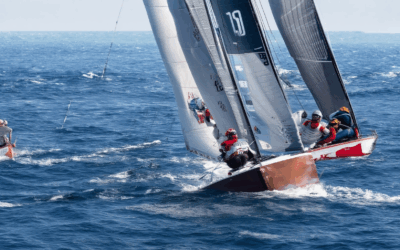
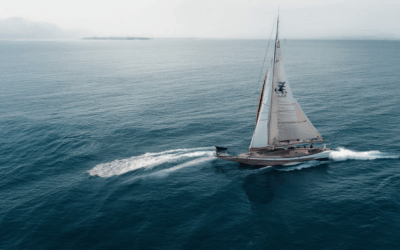
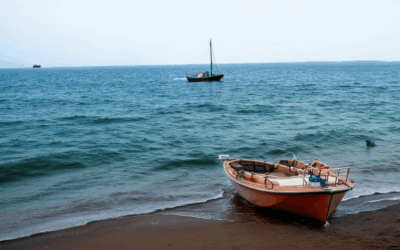
0 Comments